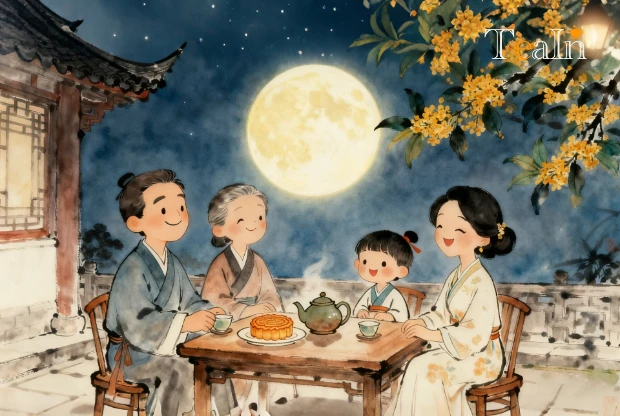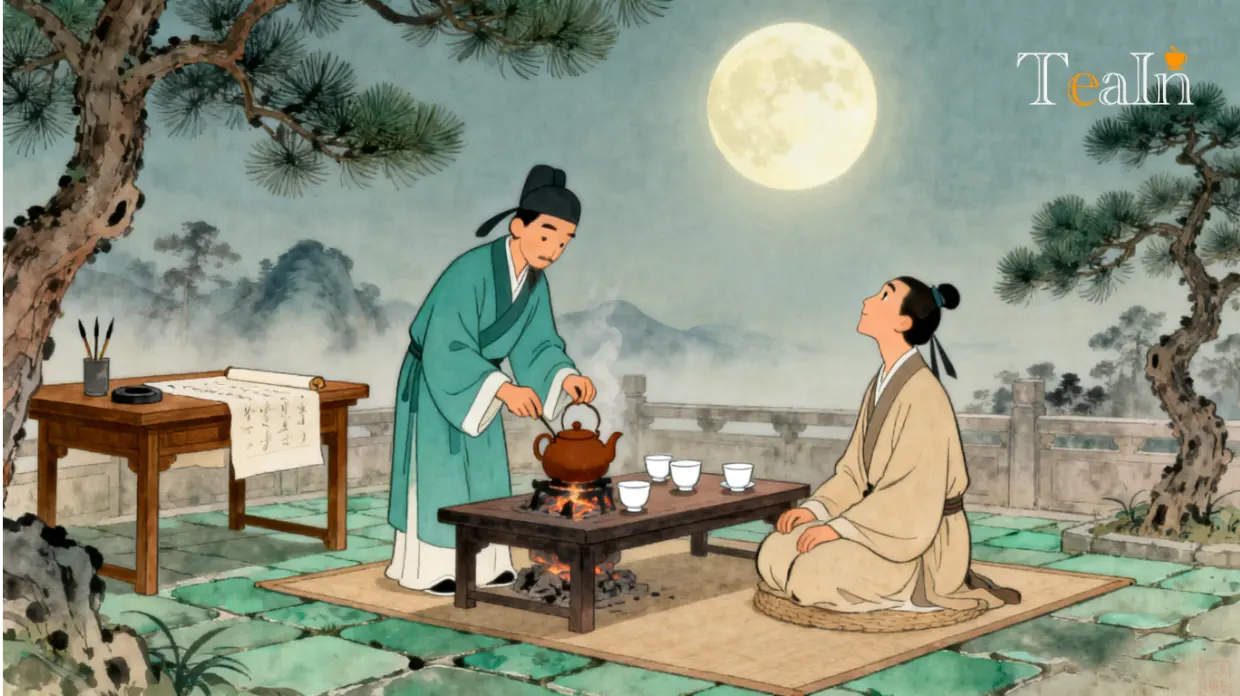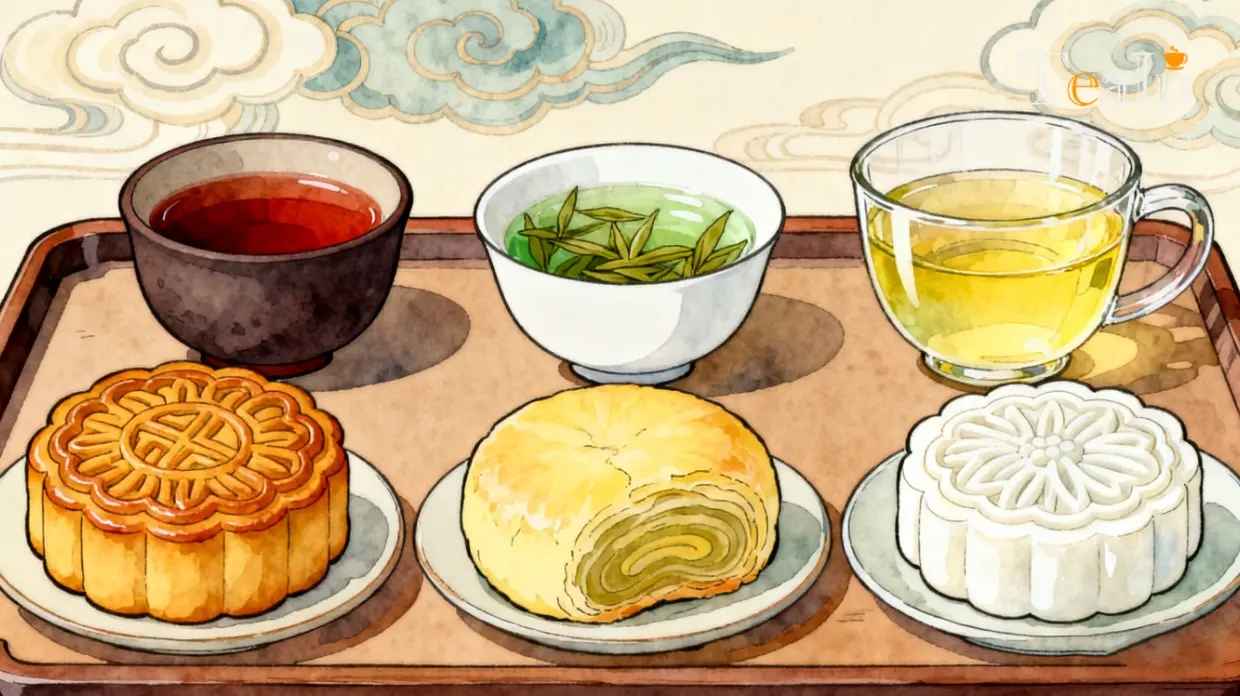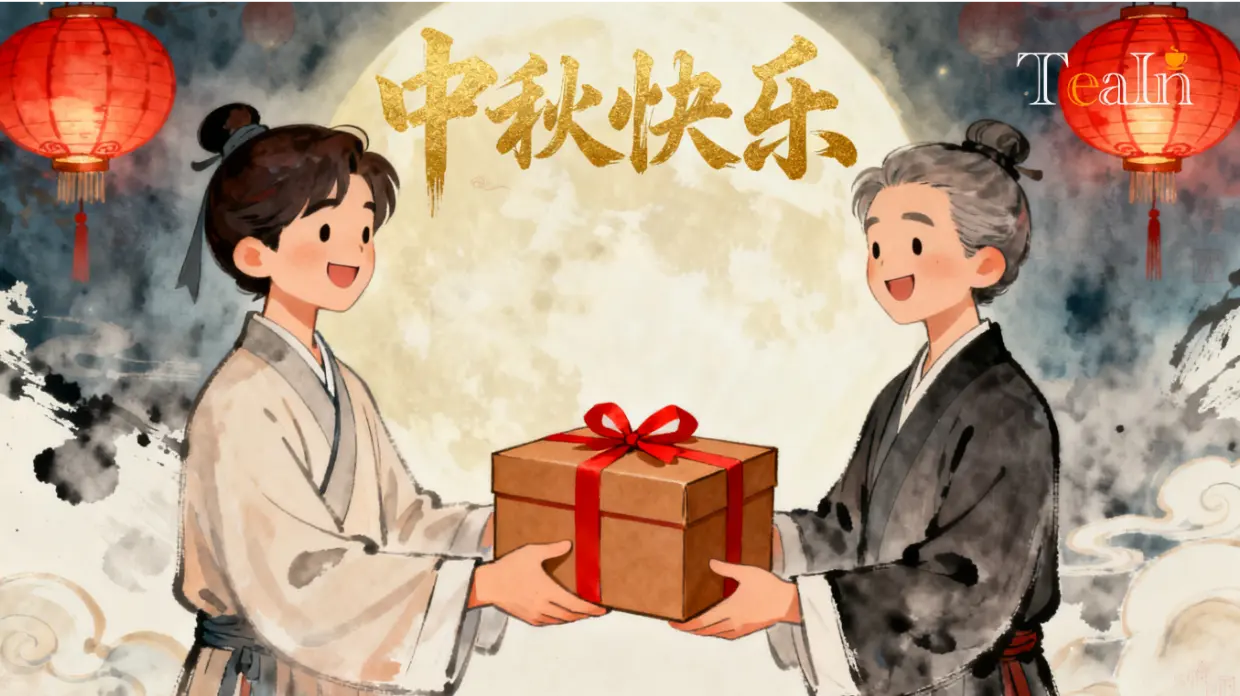Mid-Autumn Festival and Tea

Soon, China will welcome one of its most gentle traditional festivals—the Mid-Autumn Festival. For Chinese people, this festival is not just about "watching the moon"; it’s a time for family members to gather and share the joy of reunion. On the table, there are round mooncakes; by the window, the faint aroma of tea lingers. Family members chat casually as moonlight spills in, softening the air itself. Many foreign friends, when experiencing the Mid-Autumn Festival for the first time, often wonder: Why do Chinese people always have a pot of tea during this festival? In fact, the bond between tea and the Mid-Autumn Festival has long been rooted in centuries of customs, and in every sip that "cuts through greasiness and warms the heart." Today, I want to share the stories of tea and the Mid-Autumn Festival, and how a cup of tea can help you understand the romance of this Chinese festival.
1. Why Can’t the Mid-Autumn Festival Do Without Tea? The Answer Lies in the "Reunion Feast"
Foreign friends trying mooncakes for the first time are often "amazed" by their sweetness and richness. Whether it’s Cantonese-style mooncakes filled with lotus seed paste and salted egg yolk, or Su-style mooncakes stuffed with red bean paste and covered in crumbly pastry, all carry a strong "festival vibe." However, after a few bites, you may start to feel a bit greasy. At this moment, Chinese people will always serve a cup of hot tea. A small sip instantly refreshes your mouth—and this is tea’s first "mission" during the Mid-Autumn Festival: cutting through greasiness.
The sweetness of mooncakes comes from sugar and oil, while the tea polyphenols and amino acids in tea can neutralize greasiness, leaving your mouth fresh again. As the Chinese saying goes, "Tea with mooncakes makes the feast more enjoyable"—and this is not without reason. But tea’s role goes far beyond "cutting greasiness." The core of the Mid-Autumn Festival is "reunion." When the whole family sits together, boiling and serving tea becomes an interactive process: someone boils the water, someone passes the teacups, and someone talks about how this year’s tea is more mellow than last year’s. Conversations flow naturally. Compared to other drinks, tea is more like a "bond of reunion," slowing down the time spent together and making it warmer.

2. Mid-Autumn in Ancient Times: Tea and the Moon Were Already "Linked"
In fact, the tradition of drinking tea during the Mid-Autumn Festival has existed in China for over a thousand years. In ancient times, there were no modern forms of entertainment, so the most romantic way to celebrate the Mid-Autumn Festival was to "admire the moon and drink tea" with family and friends.
For example, literati in the Song Dynasty would set up a tea table in their courtyards during the Mid-Autumn Festival. On the table, there were delicate porcelain cups and a pot of freshly brewed tea. They would watch the moon rise slowly while writing poems and chatting. The great poet Su Shi once wrote a line for the Mid-Autumn Festival: "且将新火试新茶,诗酒趁年华" (It means "take advantage of this beautiful Mid-Autumn moment to brew fresh tea and enjoy wine, so as not to waste the wonderful years"). Back then, tea was not just a drink, but a "carrier" for literati to express their emotions—the moon symbolized longing, and tea represented elegance. Together, they created the most gentle atmosphere of the Mid-Autumn Festival.
By the Ming and Qing dynasties, the custom of drinking tea during the Mid-Autumn Festival became more popular among ordinary people. On Mid-Autumn night, people would place tea and mooncakes on a table in the yard to "respect the moon" (a sign of ancient people’s reverence for nature) before sharing the mooncakes and tea with their families. Northerners preferred jasmine tea, whose floral aroma mixed with the moonlight, creating a fresh feeling. Southerners loved oolong tea, whose rich taste could balance the sweetness of mooncakes. No matter what kind of tea it was, it carried the "taste of reunion."

3. Avoid Mistakes When Drinking Tea During Mid-Autumn: Pair Different Mooncakes with Different Teas
Many foreign friends feel confused when choosing tea for the Mid-Autumn Festival for the first time. In fact, it’s simple—just remember the principle of "pair sweet mooncakes with light tea, and greasy ones with rich tea," and you’ll easily find the perfect match.
3.1 Cantonese-style Mooncakes (Lotus Seed Paste, Salted Egg Yolk, Red Bean Paste Fillings) → Ripe Pu’er Tea
Cantonese-style mooncakes are the most classic Mid-Autumn mooncakes. They have rich fillings and high levels of oil and sugar. For example, mooncakes with lotus seed paste and salted egg yolk are sweet and fragrant, but they can be quite greasy if you eat too many. At this time, a pot of ripe Pu’er tea is the best match. Ripe Pu’er tea is fermented, with a warm reddish-brown liquor and a mellow taste, accompanied by a faint aged aroma. It not only cuts through greasiness but also warms the stomach—perfect for cool Mid-Autumn nights.
3.2 Su-style Mooncakes (Red Bean Paste, Five-Nut, Mixed Fruit Fillings) → Green Tea (Longjing)
Su-style mooncakes are known for their "crispy crust" that crumbles at the touch. Their fillings are slightly sweet and less greasy than Cantonese-style ones. They pair well with green tea, such as Longjing or Biluochun. Green tea has a pale yellow-green liquor, a fresh and crisp taste, and a bean-like or floral aroma. When paired with the mild sweetness of Su-style mooncakes, it feels like "tasting the freshness of autumn"—it doesn’t overpower the mooncake’s flavor but enhances its crispy aroma instead.
3.3 Snow Skin Mooncakes (Mango, Durian, Strawberry Fillings) → White Tea (White Peony)
Nowadays, many young people love snow skin mooncakes. Their crust is cold, and the fillings are mostly fruity, with a fresh taste. There’s no need for strong tea here—white tea (such as White Peony) is an excellent choice. White tea has a pale apricot-yellow liquor, a sweet taste, and a faint floral aroma. It echoes the fruity flavor of snow skin mooncakes, and drinking it won’t feel too cold or too hot, making your stomach more comfortable.

4. Gifting Tea During Mid-Autumn: It’s Not Just Tea, But "Affection"
Besides drinking tea yourself, gifting tea is also an important Mid-Autumn custom in China. For Chinese people, gifting tea during this festival is more meaningful than other gifts. First, tea symbolizes "health"—giving tea means "I hope you stay healthy." Second, tea can be stored for a long time, just like "affection never expires." When a friend receives the tea, every time they brew it, they will remember, "This was a gift from someone during the Mid-Autumn Festival," and feelings of longing will follow.
If your Chinese friends or clients are celebrating the Mid-Autumn Festival, a beautifully packaged box of tea makes a great gift. For example, aged white tea implies "the longer it ages, the more fragrant it becomes, just like lasting friendship." Oolong tea symbolizes "a rich taste and a fulfilling life." It doesn’t need to be expensive—the key is to add a message like "Happy Mid-Autumn Festival! Remember to drink tea with your family." Your thoughtfulness will surely be felt.
Final Note: An Invitation to Experience a "Tea-Flavored Mid-Autumn"
This Mid-Autumn Festival, if you have the chance to gather with Chinese friends, try boiling a pot of tea, eating a mooncake, and watching the moon together. You’ll find that the fragrance of tea, the sweetness of mooncakes, the softness of moonlight, and the laughter of family and friends all come together to create what Chinese people cherish most about the Mid-Autumn Festival.
Even if you can’t be together, you can still brew a cup of tea and look at the moon. As the Chinese saying goes, "天涯共此时" (Though miles apart, we share the same moonlit moment). No matter where you are, as long as there is the moon and tea, you can feel the warmth of reunion beyond distance. After all, the true meaning of the Mid-Autumn Festival is not "having to be together," but "caring for each other"—and tea is the gentlest "witness" to this affection.
